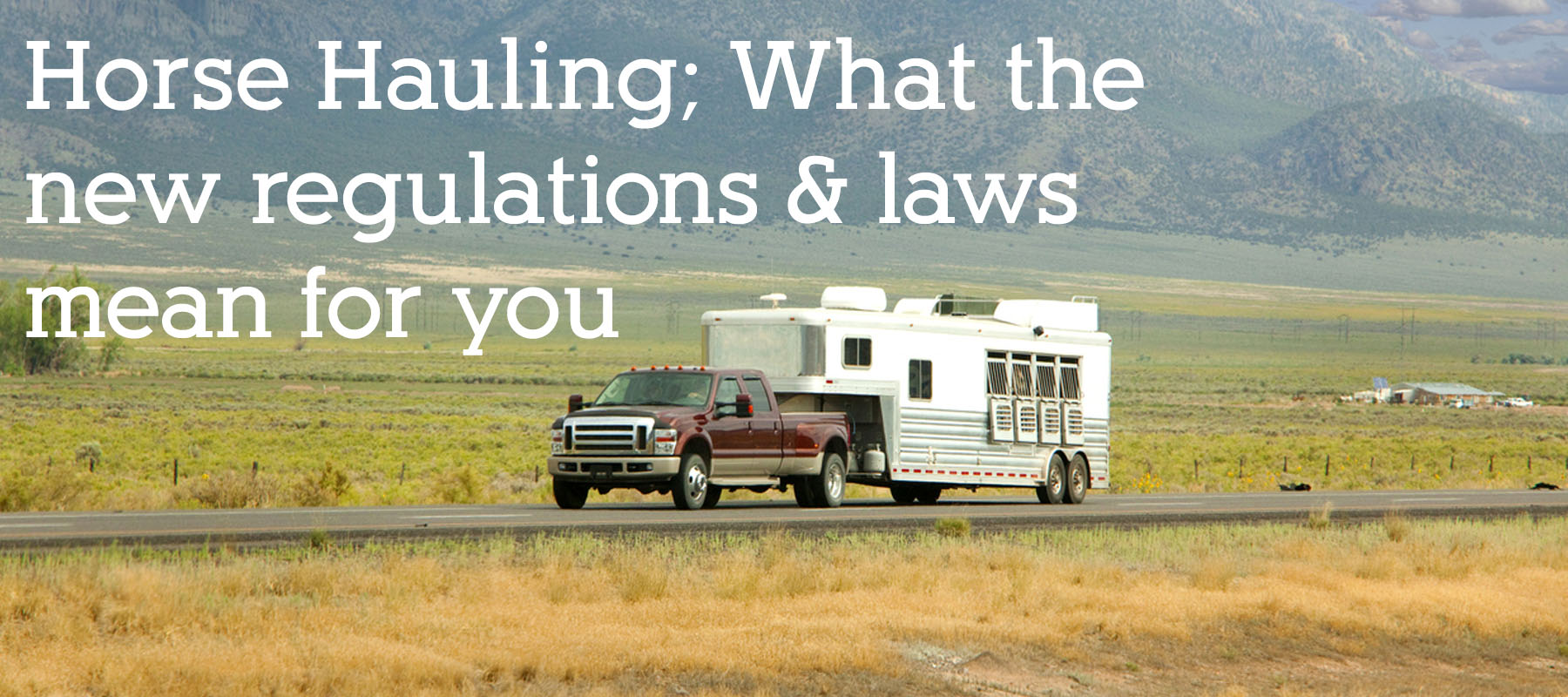
With all the recent changes to regulations regarding horse trailering, it’s no wonder many of us are left dazed & confused. Get the details here on what you need to do to stay legal while hauling your horse, or anyone else’s horse!
ELD’s or Electronic Logging Devices
The electronic logging device (ELD) rule – congressionally mandated as a part of MAP-21 – is intended to help create a safer work environment for drivers, and make it easier and faster to accurately track, manage, and share records of duty status (RODS) data. An ELD synchronizes with a vehicle engine to automatically record driving time, for easier, more accurate hours of service (HOS) recording.
The new ELD mandate requires that the vehicle used for hauling be fitted with the device under the following conditions:
- The vehicle used in hauling is a commercial vehicle
- Hauling activities fall outside of the exemptions for livestock and/or agriculture transport (it is important to note that the majority of the show industry will fall outside of this exemption.) 1
- The driver is required to obtain a Commercial Driver’s License (CDL) due to the combined weight of the truck and trailer.2
Learn more through this American Horse Council Brochure.
CDL or Commercial Driver’s License:
The introduction of the Electronic Logging Device (ELD) mandate brought to light concerns about Commercial Driver’s license (CDL) requirements from the entire equine community. The AHC put together the following information to act as a guide for those hauling horses both commercially and as an individual.
If you have any questions, the AHC recommends contacting your state department of transportation for further clarification on CDL requirements.
How do I Know if I Need One?
Drivers have been required to have a CDL in order to drive certain commercial motor vehicles (CMVs) since April 1, 1992. That being said, a truck and trailer can be considered a commercial vehicle without the requirement that you obtain a CDL. The AHC would like to note that the requirements for a CDL or CMV classification have been in effect for quite some time, and are not new developments along with the ELD mandate.
However, you will need to obtain a CDL if your vehicle falls into the following categories:
- Combination of vehicles with a gross combined weight rating (GCWR)3 of 26,001 or more pounds, providing that gross vehicle weight rating (GVWR) of the vehicle being towed is more than 10,000 pounds. So, for example, if your truck weights 11,000 pounds, and your horse trailer has a GVWR of more than 15,000 pounds, you would be required to obtain a CDL.
- Any single vehicle with a GVWR4 of 26,001 or more pounds Each state has their own set of regulations in addition to federal requirements for a CDL, so it is important to research and understand the laws in your respective state before applying for a CDL.
Learn more through this American Horse Council Brochure.
1) MORE INFORMATION CAN BE FOUND HERE: HTTPS://WWW.FMCSA.DOT.GOV/FAQ/WHAT-“COVERED-FARM-VEHICLE”-CFV.
2) GVW OF 25,001 OR GREATER.
3) GCWR IS THE VALUE SPECIFIED BY THE COMMERCIAL MOTOR VEHICLE MANUFACTURER: HTTPS://WWW.FMCSA.DOT.GOV/REGULATIONS/RULEMAKING/2012-21017.
4) GVWR AND GCWR ARE MANUFACTURER DESIGNATED WEIGHTS, NOT THE LOADED WEIGHTS FROM THE BILL OF LADING OR THE SCALED WEIGHT OF THE VEHICLE.






Leave a Reply
You must be logged in to post a comment.